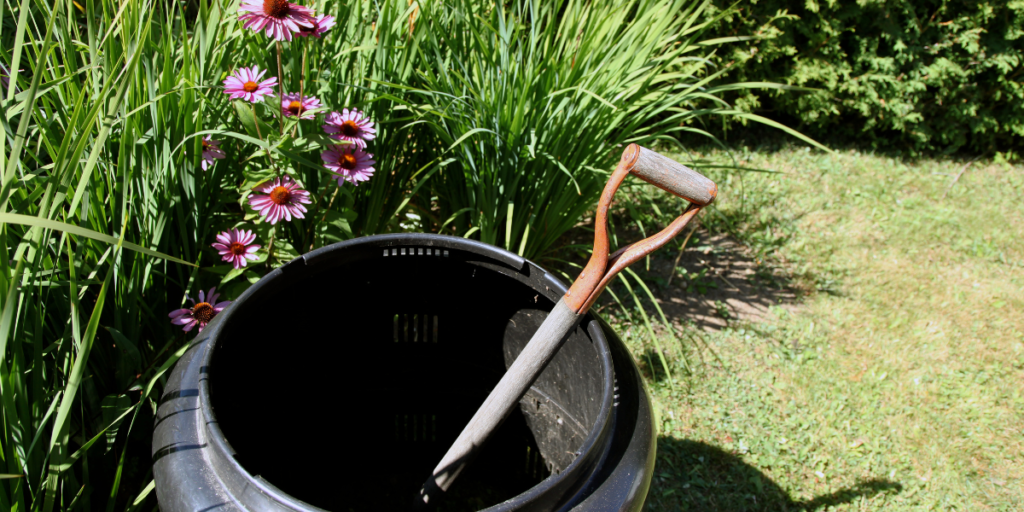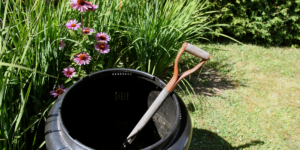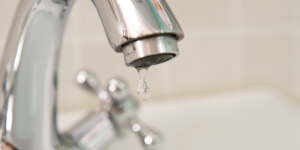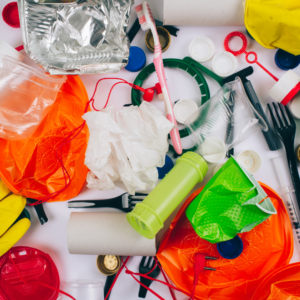Beginner’s Comprehensive Guide to Composting at Home
Composting is one of the simplest and most rewarding ways to reduce your household waste and enrich your garden’s soil. By turning kitchen scraps and yard waste into nutrient-rich compost, you’re not only helping the environment but also creating an amazing natural fertilizer for your garden. If you’re new to composting, this comprehensive guide will walk you through everything you need to know to get started.
Why Composting Matters
Composting helps reduce landfill waste and lowers greenhouse gas emissions by keeping organic material out of landfills. Instead, this organic matter breaks down naturally, providing essential nutrients for your garden. Plus, by composting, you can save money on fertilizers and reduce your carbon footprint.
Key Benefits of Composting at Home:
- Reduces Household Waste: Keeps organic waste out of landfills.
- Enriches Soil: Improves soil structure, water retention, and nutrient levels.
- Cuts Down on Chemical Fertilizers: Provides natural fertilizer for your garden.
- Lowers Greenhouse Gases: Reduces methane emissions from landfills.
Types of Composting Methods
There are several ways to compost, and choosing the right one depends on your space, lifestyle, and commitment level. Here are some popular composting methods with more details to help you decide which is best for you:
1. Backyard Composting
Backyard composting is the most common method, perfect for those who have outdoor space. It involves using a compost bin or creating a pile where you layer organic materials to decompose naturally. This method is ideal if you have yard trimmings, garden waste, and lots of kitchen scraps. Backyard composting requires some commitment, as you’ll need to manage the pile by turning it and keeping it moist.
2. Vermicomposting
If you’re short on space, vermicomposting is an excellent option. Vermicomposting uses worms to break down organic matter and can be done indoors or outdoors, making it ideal for those living in apartments or with minimal yard space. Worm bins are small, convenient, and require minimal maintenance, making this a good option for people who want a low-maintenance composting solution for kitchen scraps.
3. Tumbler Composting
A tumbling composter is a quick and easy option for beginners and for those who want faster composting results. It allows you to mix and aerate the compost without manually turning a pile, which can speed up the decomposition process. Tumblers are great if you want something simple to manage, and they are often more contained, helping to reduce pests.
Choosing the Right Compost Bin
Choosing the right compost bin will depend on your personal needs, such as the amount of space you have, the types of materials you want to compost, and the level of effort you want to put into managing your compost. Here are some considerations for each type of bin to help you determine the best fit for your situation:
- Space Available: If you have a larger garden, a stationary backyard bin might be a good option. It can hold a significant amount of organic material and is ideal if you also have yard trimmings to compost. We recommend the SOCOME Composter for those with more space; it’s made of sustainable materials, stylish, roomy, and makes an eco-conscious alternative to plastic bins.
- Speed of Composting: If you want faster compost results, a tumbler composter is a great choice. Tumblers are easy to use and require minimal effort to aerate. The FCMP Outdoor IM4000 Tumbling Composter is made from recycled resin, features a dual-chamber design, and makes turning the compost easy, which is perfect for beginners.
- Indoor or Small Space Composting: If you live in an apartment or have minimal space, vermicomposting is an excellent option for you. A worm bin is compact and can be used indoors, which makes it convenient for small households. We love the Essential Living Composter Worm Bin because it comes in various colors and is an effective, stylish way to compost your kitchen scraps indoors.
When I first started composting, I opted for a stationary backyard bin because I had space and liked the idea of composting yard trimmings alongside kitchen scraps. For detailed guidance on choosing the right bin, check out our How to Start Composting at Home: 7 Easy Steps for Beginners.
What to Compost
To create a successful compost pile, it’s important to know what you can and cannot compost. Here are some examples:
Items to Compost:
- Green Materials (Nitrogen-Rich): Fruit and vegetable scraps, coffee grounds, grass clippings.
- Brown Materials (Carbon-Rich): Dry leaves, branches, paper towels, cardboard, straw.
Items to Avoid:
- Meat and Dairy: These can attract pests and create bad odors.
- Oily or Greasy Foods: Oils can create a barrier that prevents composting.
- Diseased Plants: Can spread disease if used in your garden.
A good rule of thumb is to use a balanced mixture of green (nitrogen-rich) and brown (carbon-rich) materials. This balance helps your compost break down efficiently and prevents any unpleasant smells.
Setting Up Your Compost Pile
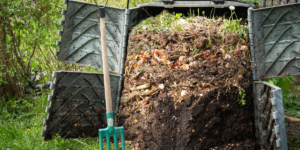
Composting is all about creating the right environment for decomposition. Follow these steps to set up your compost pile:
- Start with a Base Layer: Place a layer of coarse brown materials (like small branches or twigs) at the bottom. This helps with drainage and aeration.
- Add Layers of Green and Brown Materials: Add alternating layers of green and brown materials. Aim for a 2:1 ratio of browns to greens.
- Keep It Moist: Your compost pile should be as moist as a wrung-out sponge. If it gets too dry, add some water; if it’s too wet, add more brown materials.
- Turn the Pile Regularly: Aerate your compost by turning it every 1-2 weeks. This speeds up the decomposition process and prevents odors.
When I started my compost pile, I found that turning it regularly really helped accelerate the process. It also kept my pile from getting smelly, which was a huge plus.
Maintaining Your Compost Pile
Maintaining a compost pile is easy once you understand the basics. Here are some quick maintenance tips:
- Monitor Moisture: Keep the pile moist but not waterlogged. Cover your compost during heavy rain to prevent it from getting too wet.
- Turn It Regularly: Aeration is key to keeping your compost pile healthy. Turning it every few weeks will help provide the oxygen necessary for decomposition.
- Add the Right Mix of Materials: Maintain a balance between green and brown materials. Too much green can make your pile slimy, while too much brown can slow down the decomposition process.
Troubleshooting Common Problems
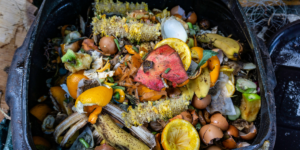
Bad Odor: If your compost smells, it might be too wet or have too much nitrogen. Add more brown materials and turn the pile to aerate.
Pile Not Breaking Down: If your compost isn’t decomposing, there may be too little nitrogen or moisture. Add green materials or water as needed.
Pests in the Pile: Avoid adding meat, dairy, or oily foods to keep pests away. Cover food scraps with brown materials to minimize attraction.
How to Tell When Your Compost is Ready
Your compost is ready to use when it looks dark, crumbly, and has an earthy smell. This typically takes anywhere from 2-6 months, depending on factors like material balance, aeration, and temperature.
When my first batch of compost was ready, I used it in my vegetable garden, and I noticed an immediate difference. The soil quality improved, and my plants were healthier and more productive.
Using Your Compost
Compost can be used in a variety of ways in your garden:
- Mix It into Garden Beds: Use compost as a soil amendment to enrich your garden beds.
- Top Dress Your Lawn: Spread a thin layer of compost over your lawn to improve soil health.
- Use It in Potted Plants: Mix compost into potting soil to boost nutrient content.
For more ideas on using your compost, see our guide on How to Create an Eco-Friendly Garden: A Step-by-Step Guide.
Key Takeaways
- Choose the Right Bin: Select a compost bin based on your space and needs, such as a backyard bin or vermicomposter.
- Maintain Balance: Compost green (nitrogen) and brown (carbon) materials to achieve an optimal mixture.
- Turn Regularly: Aerate your pile to speed up the composting process and avoid odors.
- Compost is Ready: Your compost is ready when it’s dark, crumbly, and has an earthy smell.
FAQ
Q: Can I compost in an apartment? A: Yes! Vermicomposting (using worms) is a great way to compost in small spaces, including apartments.
Q: How do I prevent my compost from smelling bad? A: A balanced mix of green and brown materials, along with regular turning, will prevent unpleasant smells.
Q: Can I compost citrus peels? A: Yes, citrus peels can be composted, but in moderation. Too many can make the compost too acidic.
Q: What should I do if my compost pile is too wet? A: Add more brown materials like dry leaves or cardboard to absorb excess moisture.
Composting at home is a simple and effective way to reduce waste and improve the health of your garden. By following these steps, you’ll be well on your way to creating rich, fertile compost that your plants will love. Whether you’re a beginner or looking to improve your composting skills, this guide has everything you need to start composting successfully.
If you have questions or tips for fellow composters, drop a comment below and let’s grow our composting community together!

